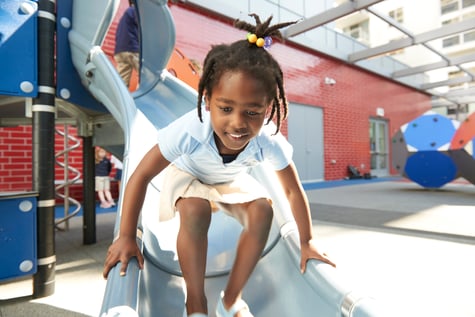RECESS AS A TOOL FOR GROWING AND LEARNING
March 8, 2017 admin Education, GEMS World Academy Chicago, Whole Child, Learning, Recess
Recess is often viewed as the time when students take a break from the learning they do in school. But reseach shows that in fact, recess is itself a powerful learning opportunity, and more schools are viewing it as an important element of their educational program.
Andrew Slater, associate head of school at GEMS World Academy Chicago, said recess is an integral part of the educational experience at his school. On average, GEMS students have recess twice each school day.
"It provides an opportunity for students to engage in social interaction, negotiation, give-and-take — all of which are skills critical for adult success," Slater said. "And it gives teachers a chance to see a different side to their students, which helps them back in the classroom."
Slater added that while recess is supervised, teachers try to allow students to chart their own course in an unstructured environment.
 GEMS World Academy's approach is backed by multiple sources of research. According to the American Academy of Pediatrics, recess, defined as "regularly scheduled periods within the elementary school day for unstructured physical activity and play," has benefits for the whole child. These advantages include but are not limited to the following:
GEMS World Academy's approach is backed by multiple sources of research. According to the American Academy of Pediatrics, recess, defined as "regularly scheduled periods within the elementary school day for unstructured physical activity and play," has benefits for the whole child. These advantages include but are not limited to the following:
- Cognitive and Academic Benefits: Children develop cognitively as the result of interactive experiences. Recess provides the perfect unstructured environment for them to learn in.
- Social and Emotional Benefits: Recess helps children grow socially and emotionally by allowing them to engage in peer relationships and practice essential social skills. Recess also supports communication skills, ranging from negotiation to sharing and problem-solving.
- Physical Benefits: Physical activity is essential for healthy kids, and a regular recess program gives kids the perfect opportunity to get outside and play. Even if they don't play consistently during recess, it's essential that children have the chance to be active on a regular, daily basis.
- Don't allow physical education to be replaced by recess or use recess to replace physical education. Both are necessary for healthy schools and happy kids.
- Ensure safety with adequate supervision at all times.
- Insofar as it is possible, provide students with the space, facilities and equipment they need to enjoy unstructured outdoor play. In low-income school districts, a lack of equipment is not a major problem, as space and supervision are more important components.
- Prohibit teachers and supervisory staff from using physical activity as a punishment, as this leads to negative associations.
- Make staff available to supervise and lead recess while also providing activities for ongoing development.
While recess is an often overlooked part of school time, it's critical for children, and schools that prioritize it can enjoy better health, outlooks and concentration in their pupils.
What's more, since recess helps support the mental, social, cognitive and emotional development of school-age children, kids who have regular access to it learn and grow in a more linear and streamlined way. In turn, this leads to better grades, better academic outcomes and focused dedication to the educational and social systems taught in school.
As things like art programs are increasingly bargained out of school districts around the country, recess is one thing teachers and administrators are beginning to stress the importance of. It is the one part of school that is continually revered for its ability to improve the lives of children.
